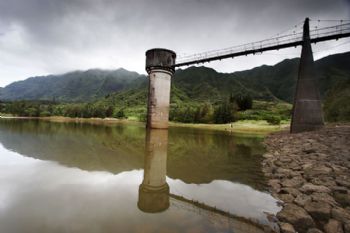
Plans to spend tens of millions of dollars building hydro-electric power plants in Nuuanu (pictured) and Wahiawa on Hawaii’s Oahu island are moving through the state legislature. These facilities would be Oahu’s only hydro-electric plants.
Chris Lee, a member of the Hawaii House of Representatives, said: “It is all pretty exciting. It involves using the existing reservoir to capture water and running a turbine to generate power when we need it most.”
In mid-February, the Hawaii Energy and Environmental Protection Committee approved measures to provide funding to the Honolulu Board of Water Supply’s pumped-storage hydro-electric project, located at its Nuuanu reservoirs.
It also approved funding for a study evaluating a possible purchase of the Wahiawa Dam from the Dole Food Co. The state would then upgrade it by building a hydro-electric power plant there. The Nuuanu plan could cost up to $51 million. The Wahiawa system would cost much more.
Hydro-electric power generation has been used on Kauai and the Big Island for decades. On the Garden Isle, hydro-electric power provides about 9% of the island’s demand. Unlike these plantation-era power plants, though, the Wahiawa and Nuuanu proposals would use technology that recycles the water.
The water used to turn the turbines at the Wahiawa Dam would eventually flow back into Kaukonahua Stream. It would then be pumped back to the reservoir, using solar power during the day or wind power during the night.
Henry Curtis, executive director of the Life of the Land environmental group, said: “Solar and wind that you could not use would no longer be wasted.”
The Nuuanu project relies on low-cost off-peak electrical power to pump water from one reservoir to another — two miles away and nearly 600ft higher — in upper Nuuanu.
During peak hours, water stored in the upper reservoir would be released to produce electricity. According to the Hawaii Water Board, a similar system was used in the late 1880s to light electric-street lamps in downtown Honolulu.